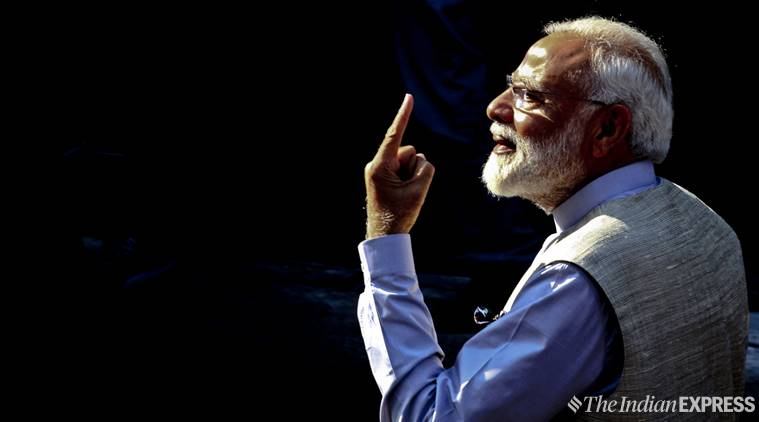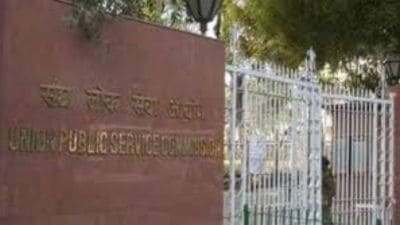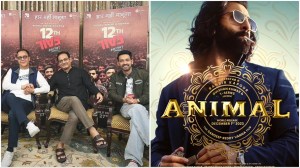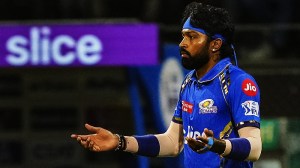- India
- International
Unseeing The Wave
When it comes to elections, experts and politicians tend to wear blinkers.
 Prime Minister Narendra Modi shows his inked finger after casting vote, during the third phase of the 2019 Lok Sabha elections. (Express Photo by Javed Raja)
Prime Minister Narendra Modi shows his inked finger after casting vote, during the third phase of the 2019 Lok Sabha elections. (Express Photo by Javed Raja)
Even after exit polls indicate near-unanimously that Narendra Modi will be back, some people refuse to read the writing on the wall. When it comes to elections, experts and politicians often tend to wear blinkers.
Some poll watchers base their assumptions on issues which may be irrelevant on the ground. During brief trips to western Uttar Pradesh and Haryana, I did not once hear a voter express concern about the Rafael deal or rake up demonetisation. Nor did the non performance of local MPs seem to matter. The chorus generally was, “We are voting for Modi, not the MP’’. The majority of the electorate clearly saw this as a presidential election. “This time Modi,” was the usual response followed by the query, “What is the alternative?’’ Even Modi’s own party has reason to be worried — everyone talked of Modi, no one mentioned the BJP.
Liberals will be concerned to know that some of the very issues and speeches for which they mocked the prime minister were appreciated by some rural folk. Many saw Modi’s bear-hug diplomacy as one of his strengths. They believe India has finally been recognised as a major power. Balakot and Pulwama, expectedly, added to the PM’s macho image. In the hinterland, people seem to want a strong man for PM, not necessarily a gentleman.
In this election, UP was supposed to be the game changer, where the BJP would be bested by a more powerful caste and community arithmetic of Yadavs, Muslims, Dalits and Jats. Deciphering an election result on the basis of caste arithmetic is a dicey business. This was a lesson I learnt covering my first parliamentary poll in 1971. The campaign manager of the Jana Sangh candidate from Delhi’s Karol Bagh constituency offered a glib explanation as to why his party, the precursor to the BJP, would romp home. The constituency was made up of x percentage of Punjabis, y percentage of South Indians, z percentage of banias and so on, with each caste and ethnic group loyal to his party for some reason or the other. He left me in no doubt that the Jana Sangh had the election sewn up. Halfway through the campaign, I began to have grave doubts, most people on the street were clear that Indira Gandhi would win hands down.
Mrs Gandhi’s 1971 election sweep taught me some basic lessons in election coverage. Trust your instincts and don’t get influenced by the local know-it-alls. Don’t let a constituency’s profile and past history overwhelm your judgement. Most importantly, never let your hopes cloud your objectivity. In 1984, I was in Mumbai and the simple test of checking with dozens of taxi drivers left me in no doubt that Rajiv Gandhi would win a thumping majority. But in my magazine’s head office in Delhi, the political head honcho, with BJP leanings, confidently predicted a hung Parliament. During the parliamentary poll in 1990, I travelled with two journalist friends in UP. On the highway from Kanpur to Agra, almost everyone spoke belligerently of building a Ram Mandir at Ayodhya. But my companions, because of their secular beliefs, kept insisting that we had not met a representative sample.

When I visited western UP in the first phase of this election, I temporarily forgot my own rules. Instead of going by the usual head count, I was swayed to some extent by the logic of caste and community arithmetic, in view of the sharp polarisation of the electorate. The Kairana by-poll of last year was on my mind since it demonstrated that when the BSP, SP and RLD came together, they could take on the BJP. In UP, like many scribes, I made the mistake of focusing more on discovering how united the gathbandhan was, rather than fully assessing the overall mood and appreciation for the government’s development schemes. I could also see that Jats, supposedly part of the gathbandhan, were clearly divided.
If I was confused in UP, when I visited Haryana the answer was clear as a bell. It was Modi all the way. The Indian Express reports in other regions noticed similar voter sentiment.
(The writer is consulting editor, The Indian Express)
40 Years Ago
EXPRESS OPINION
More Explained
Apr 16: Latest News
- 01
- 02
- 03
- 04
- 05









































